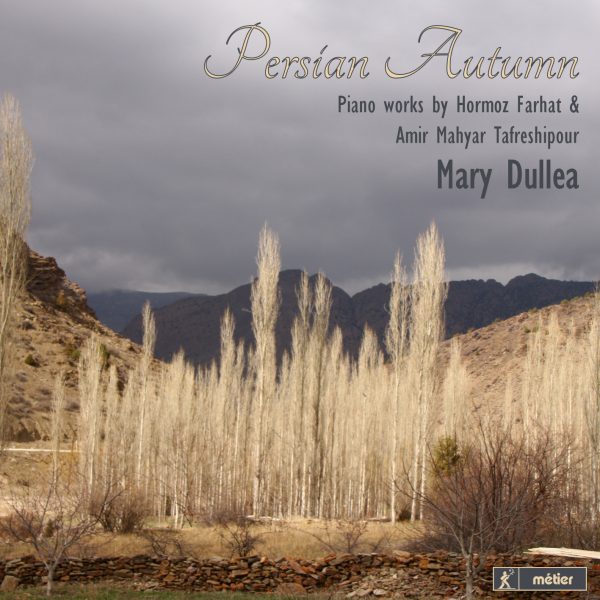Quarterly Review
New from the mètier label comes a disc of authentically home-grown piano music by two Iranian composers, Hormoz Farhat (b. 1928) who studied with Milhaud and left Iran at the time of the Islamic revolution and Amir Mahyar Tafreshipour (b. 1974) – a student of Esbjerg Academy of Music in Denmark and the composer of a 2005 commission for the BBC Symphony Orchestra – an Iranian Harp Concerto, broadcast by BBC Radio 3.
From his photo-portrait in the CD booklet, Farhat looks like an elder statesman (complete with swept-back silver hair and cravat) of the Western-leaning, Persian classical tradition, before so much of the “foreign” European culture was swept away by the Ayatollah. Received enthusiastically by Queens University, Belfast and the School of Music at Dublin University, Trinity College, Farhat is the composer of a large number of works, some symphonic – but which, sadly, have not as yet entered the mainstream repertoire. Pianist Mary Dullea’s intriguing new collection of piano pieces for mètier will hopefully redress the balance, especially if the extraordinary three-minute Toccata is anything to go by: an austere, relentless, commanding statement – containing it seems the very word of Zarathustra, or summoning a sense of the landscape and legends of the composer’s ancient country. Dating from 1952, the Toccata is based upon a Persian folk-song and was dedicated to the Russian composer, Alexander Tcherepnin.
It was this time that an American composer, Lukas Foss, took up Farhat’s First Piano Sonata – a work of the mid-1950s, a work written during the Iranian’s time spent as a composition pupil of Foss. At just under 14 minutes in length, the sonata would sit comfortably alongside music by Bartok or Prokofiev – and yet it is hard to pin Farhat down to a truly Western style, even when occupying, as he does, the borders of tonality. One might have expected the younger composer, Tafreshipour, to have followed an even more abstract style – and yet we find in works such as CelebrationatPasargadae (Pasargadae being a capital city in the ancient Persia of 500 BC) a tendency to resurrect the technique of music tone-painting. The work imagines the Persian new year: the grand, monumental buildings and the throng of people crowded together, united in their beliefs. Pendar – a meditation of stillness and deep inner thoughts, and Shabahang – a nocturne, uniting a memory of the coast of Ireland with that of Iran – show a considerable depth to one of Iran’s and the modern world’s lesser-known, younger-generation composers.
@divineartrecordingsgroup
A First Inversion Company
Registered Office:
176-178 Pontefract Road, Cudworth, Barnsley S72 8BE
+44 1226 596703
Fort Worth, TX 76110
+1.682.233.4978












